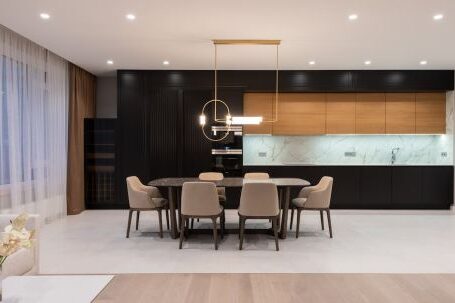In today’s fast-paced and stressful world, the importance of well-being has become more prominent than ever before. People are constantly seeking ways to improve their mental and physical health, and one often overlooked factor that can greatly influence well-being is architecture. The design and structure of our built environment can have a profound impact on our mood, productivity, and overall quality of life. This article explores the role of architecture in promoting well-being and highlights some key design principles that architects can employ to create spaces that enhance our mental and physical health.
Creating Connection with Nature
One of the fundamental ways in which architecture can promote well-being is by incorporating elements of nature into the built environment. Numerous studies have shown that exposure to nature has a positive impact on our mental and physical health. By incorporating natural materials, such as wood and stone, and incorporating ample natural light, architects can create spaces that evoke a sense of tranquility and connection with the natural world. Additionally, integrating green spaces and gardens into the design of buildings can provide opportunities for relaxation and rejuvenation.
Enhancing Natural Light and Ventilation
Natural light and ventilation are essential for our well-being. Studies have shown that exposure to natural light can improve mood, boost productivity, and regulate our sleep-wake cycle. Similarly, good ventilation promotes better air quality, which is crucial for respiratory health. Architects can prioritize the placement of windows and skylights to maximize the amount of natural light entering a space. Additionally, incorporating ventilation systems that allow for fresh air circulation can greatly improve indoor air quality and contribute to a healthier living or working environment.
Designing for Movement and Activity
Another important aspect of architecture in promoting well-being is designing spaces that encourage movement and physical activity. Sedentary lifestyles have become increasingly common in today’s society, leading to various health issues. By incorporating features such as staircases instead of elevators, walkable neighborhoods, and well-designed public spaces, architects can promote physical activity and help combat the sedentary lifestyle epidemic. Additionally, incorporating ergonomic design principles in workplaces can prevent injuries and improve productivity.
Promoting Social Interaction and Community
Architecture has the power to shape our social interactions and foster a sense of community. Designing spaces that encourage social interaction, such as communal areas and gathering spaces, can help combat feelings of isolation and loneliness. Additionally, creating mixed-use developments that incorporate residential, commercial, and recreational spaces can promote a sense of belonging and facilitate social connections within communities. By prioritizing human interaction and community integration, architects can create spaces that contribute to our overall well-being.
Conclusion: Designing for a Better Future
Architecture has a profound influence on our well-being. By incorporating elements of nature, maximizing natural light and ventilation, designing for movement and physical activity, and promoting social interaction and community, architects can create spaces that enhance our mental and physical health. As we continue to navigate an increasingly urbanized world, it is crucial that we prioritize the design of our built environment to promote well-being. By doing so, we can create a better future where people can thrive and lead healthier, happier lives.





